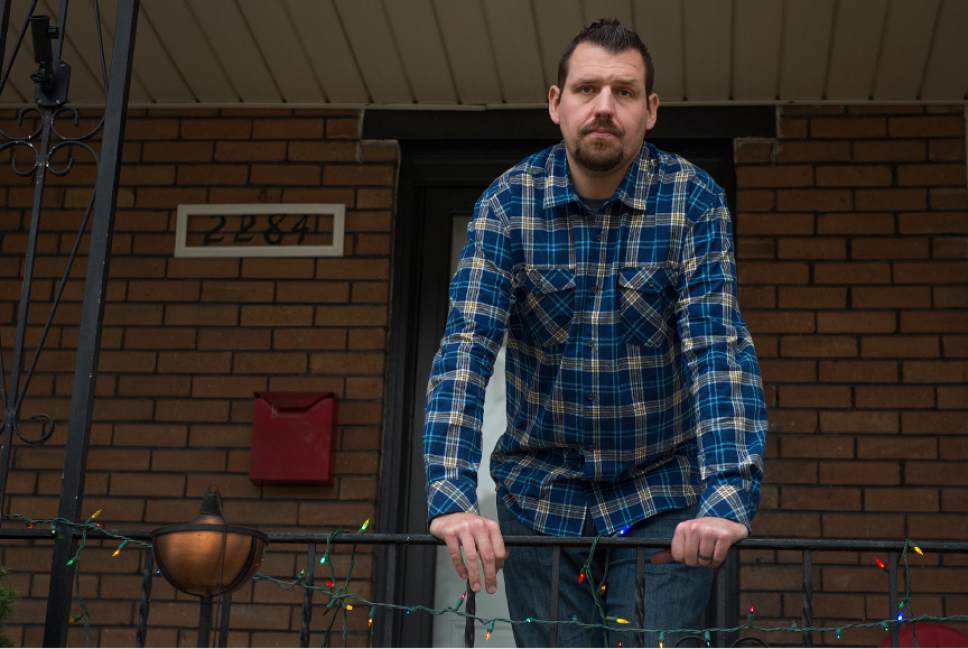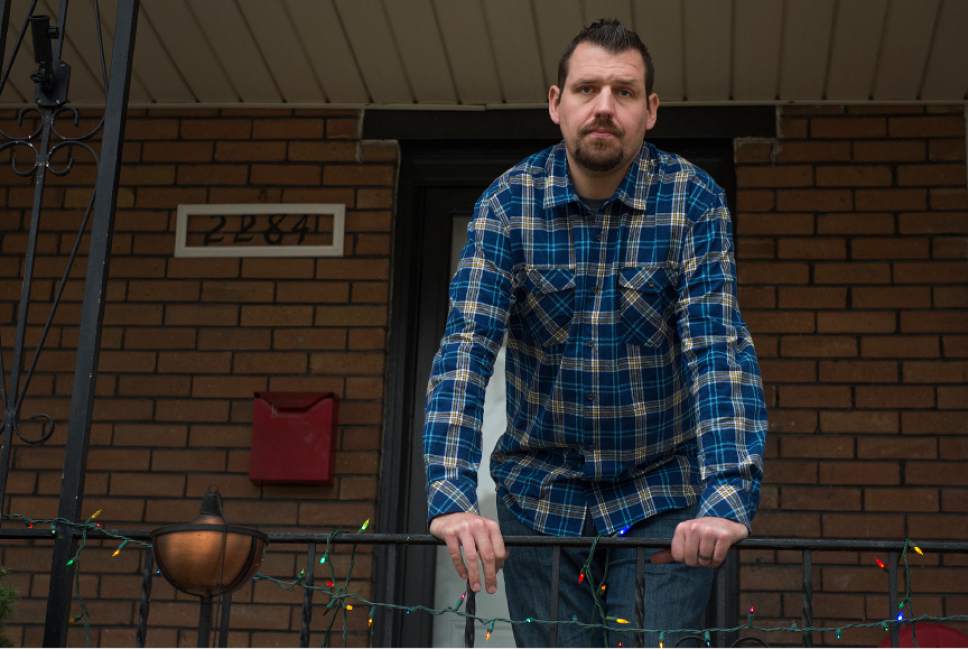This is an archived article that was published on sltrib.com in 2016, and information in the article may be outdated. It is provided only for personal research purposes and may not be reprinted.
About 18 months ago, Chris Sveiven's wife gave birth to a boy and he began to turn their newly bought red-brick house into the scene of their American dream.
Sveiven has since ripped down a wall, installed doors and replaced the flooring with engineered hardwood that he sanded, primed and painted. He installed a new sprinkler system and put down fresh sod, as well as 10 tons of pea gravel for a play area.
On Wednesday morning, after Tuesday's announcement that a homeless resource center will be built about 100 yards from his dream home, Sveiven said he thinks he had a panic attack.
"I will have to move," he said. "If this goes in, I'm not comfortable with my wife and 2-year-old living next to a giant homeless shelter."
Sveiven was among more than three dozen respondents to a Tribune survey of people who live and work near the four sites announced Tuesday as the eventual locations of 150-bed shelters — the realization of years of planning from the city and county.
A handful said they will sell their properties. Many were not pleased.
Those near 275 W. High Ave. (a salvage yard between Smith's Ballpark and Interstate 15) said a shelter will reverse a steady increase in property values and stymie local business.
Near a 131 E. 700 South Deseret Industries building, residents worried that blighted commercial spaces will continue to flounder while crimes associated with the homeless population at The Road Home's downtown shelter will be brought nearer schools and homes.
At 648 W. 100 South, a short walk from The Road Home shelter at 210 S. Rio Grande, weary residents worried that they will see more of the same even after The Road Home shelter's eventual closure.
But Sveiven was among the two-thirds of respondents who either lived or worked near 653 E. Simpson Ave. (2300 South) — notable in that it is the easternmost location and the only one that directly abuts a residential area.
Madeleine Root said she knows a half-dozen couples and families who, like her, purchased their first home in the area over the last couple years.
An elementary school teacher, Root said she put "basically everything" into the home. Now she questions whether she wants to start a family.
"It could just destroy me financially, to be quite honest, because I don't have a lot of equity built up and I just put all my savings into my deposit."
The neighborhood already has a homeless population, said Megan Buhler, who lives within four blocks of the proposed shelter and works about two blocks away at an IT consulting business.
There was a string of break-ins a couple years back, she said, and homeless people slept in the parking garage of her office building. The stairwells smelled of urine. But stepped-up police patrols have since improved the situation, she said.
Buhler said she supports a shelter in her neighborhood but was dismayed to hear that The Road Home, with a capacity of 1,100, will be closed once the four 150-bed shelters open.
Making matters worse, she said, is that the city chose to build at a location now leased by the popular Lit'l Scholars preschool. There are abandoned buildings and run-down motels that would serve as well, she said.
"There are some places where it couldn't be worse than what's there. I just think, 'Really? We're going to kick out a thriving business in a building that seems fine?' "
Many respondents across locations bristled at the lack of inclusion in a behind-closed-doors selection process. City officials have said that a public process would have been impossible given the strong feelings that city residents have about living near a shelter.
In the view of Chris Hamilton, who lives about a block and a half from the proposed site at 131 E. 700 South, "That's just robbery, basically."
Hamilton said he expects his property value to decrease by more than $10,000 as a criminal element that he saw in the late 1990s returns to Taufer Park at the intersection of 300 East and 700 South.
"I wouldn't be surprised if every house on the street goes up for sale," said Hamilton, a pre-press manager who lives with his girlfriend.
Sveiven said a handful of small businesses near the Sugar House shelter are sure to move, too.
"Everyone has been bushwhacked," said the chain-restaurant manager, whose wife was abroad working as a flight attendant at the time of the announcement. "No one knew anything until I had news crews knocking on my front door."
While a pedestrian on his block would now see Christmas decorations and children, Sveiven worries a shelter will bring the drug dealing and vagrancy of the Rio Grande area.
Officials have countered that the new, smaller facilities are designed to better contain their populations and that other resources will provide treatment and rehousing options that diminish the homeless population.
Anna Thomas, who lives with her husband about six blocks southeast of the Simpson Avenue site, is one of a handful of survey respondents who is excited to give it a shot.
Homeless people get unfairly branded a "problem" by politicians and reporters, said Thomas, who works for the ACLU of Utah.
She thinks Sugar House will be more accessible for people with varying income levels than Rio Grande, where they may "feel like they're part of this leper colony," and that a nearby Deseret Industries thrift store and affordable chain restaurant may offer employment opportunities.
The goal of society should be to offer homeless people a healthy environment in which to better themselves, she said, not to keep them out.
"I just don't think property value is the best measure of what a community is about, and I hope we can all look past our own individual real-estate holdings and be part of something bigger."
Twitter: @matthew_piper





